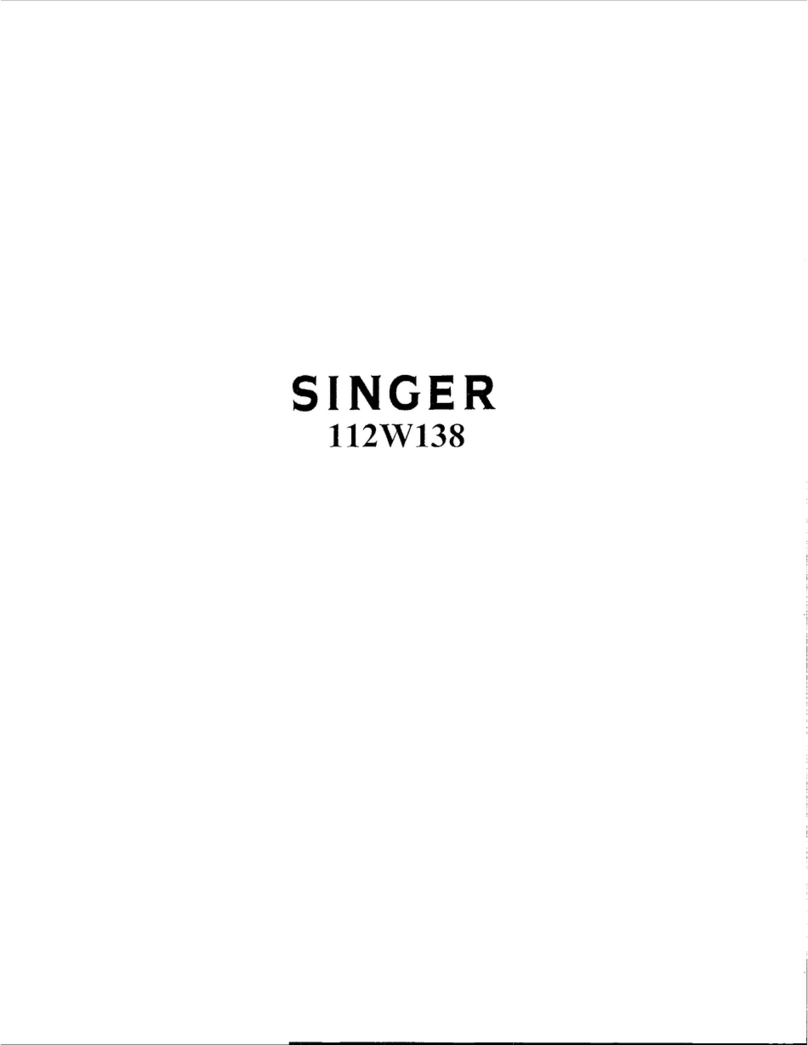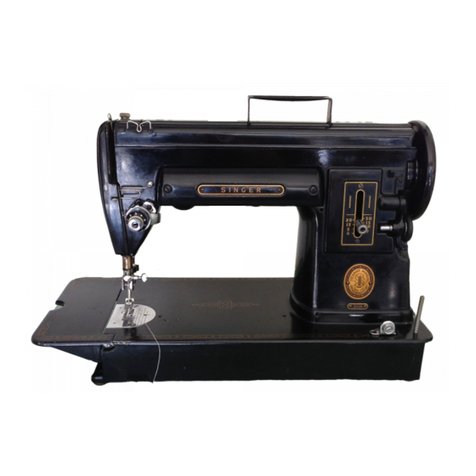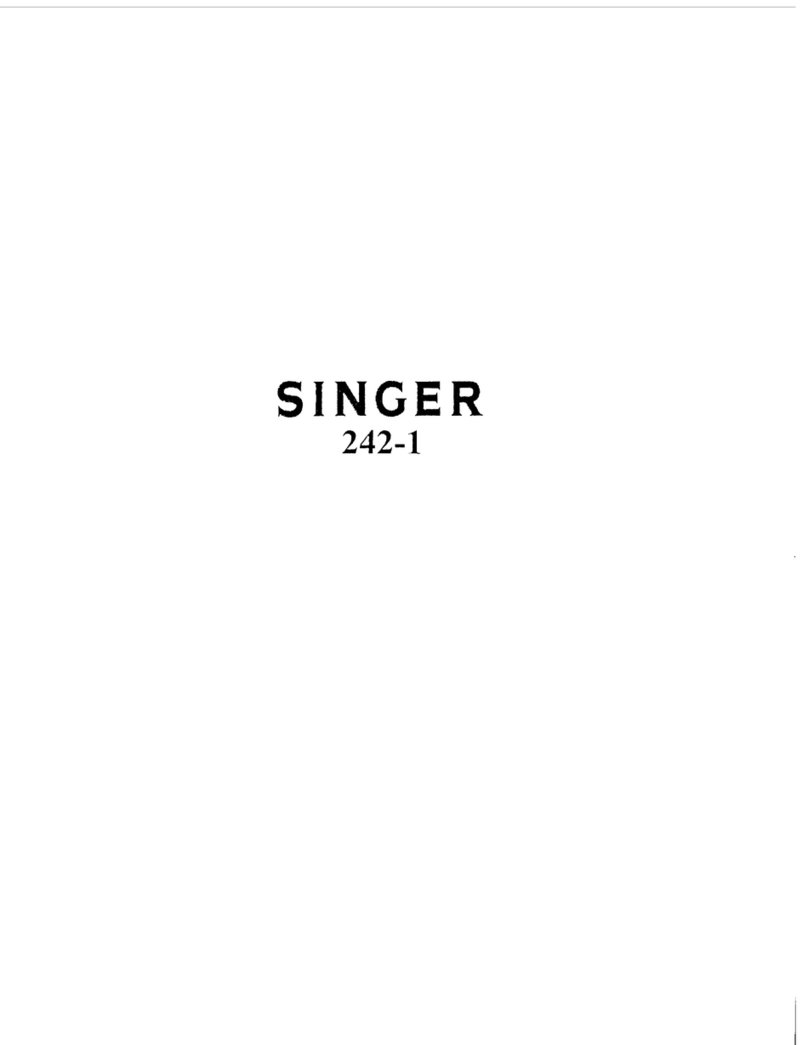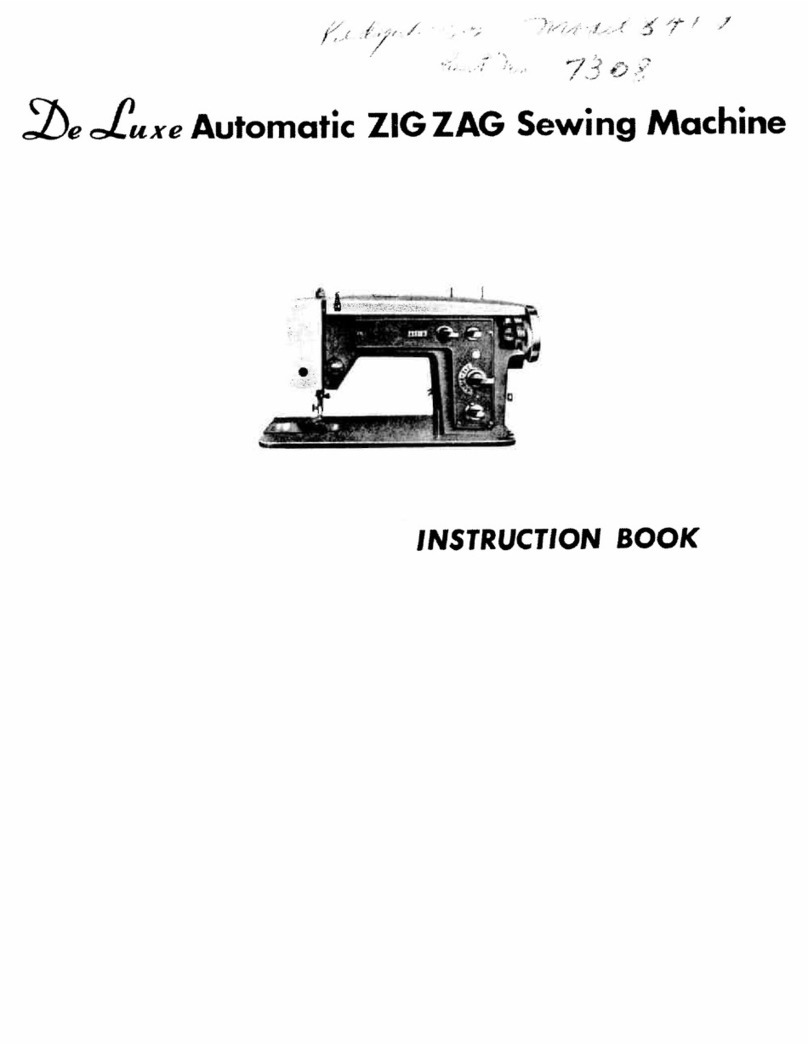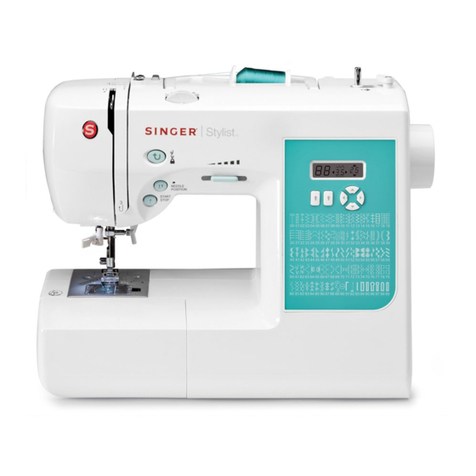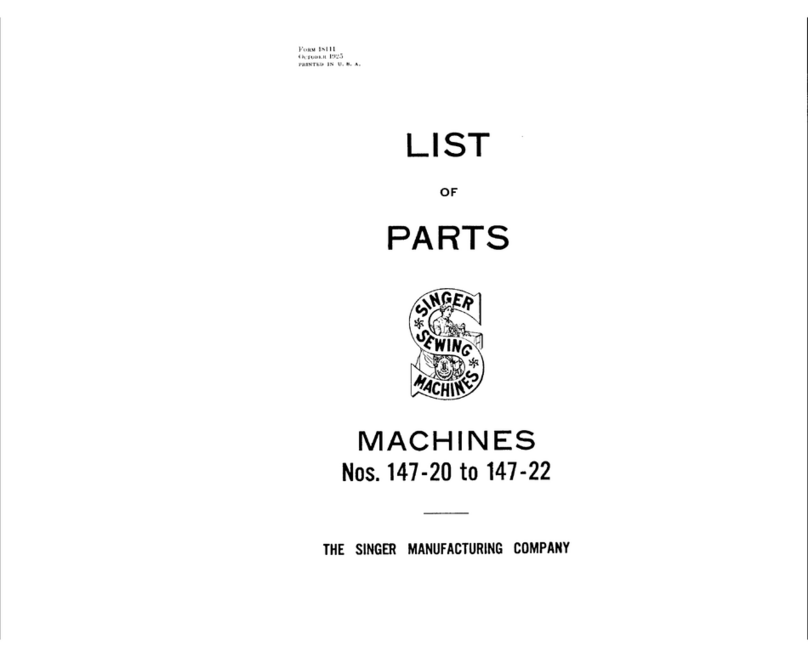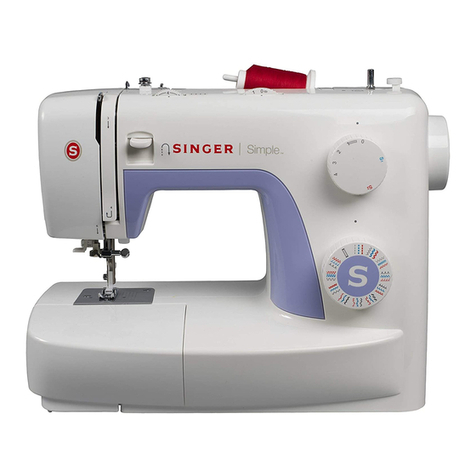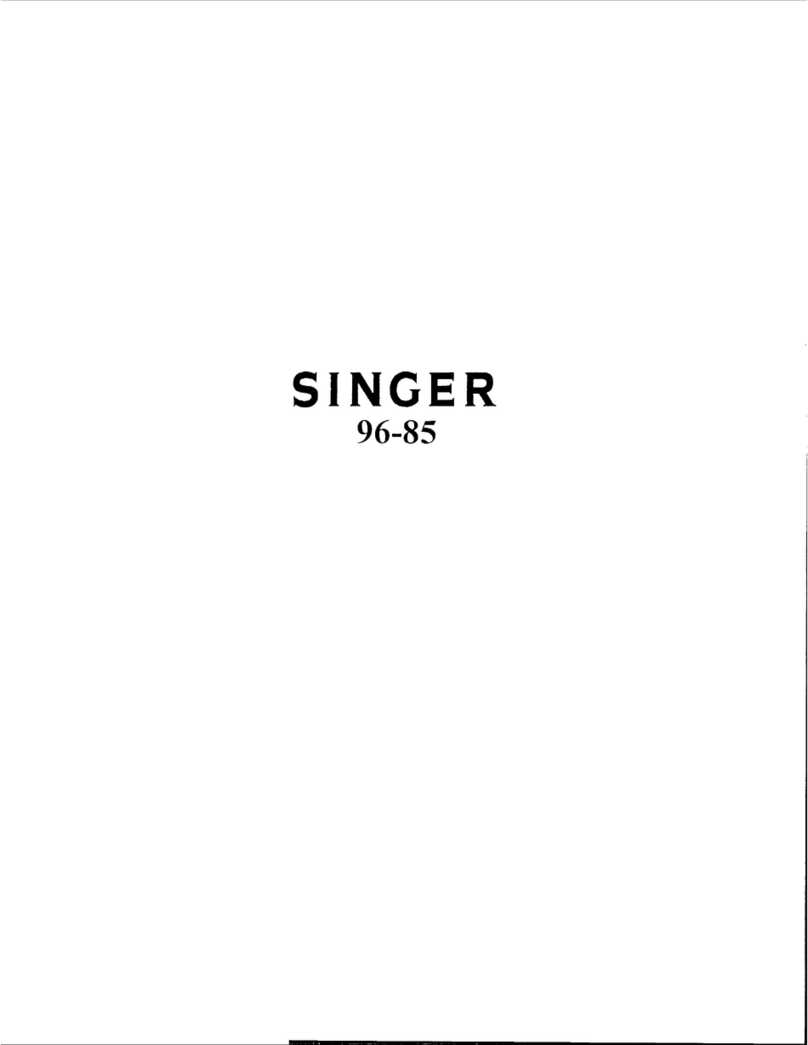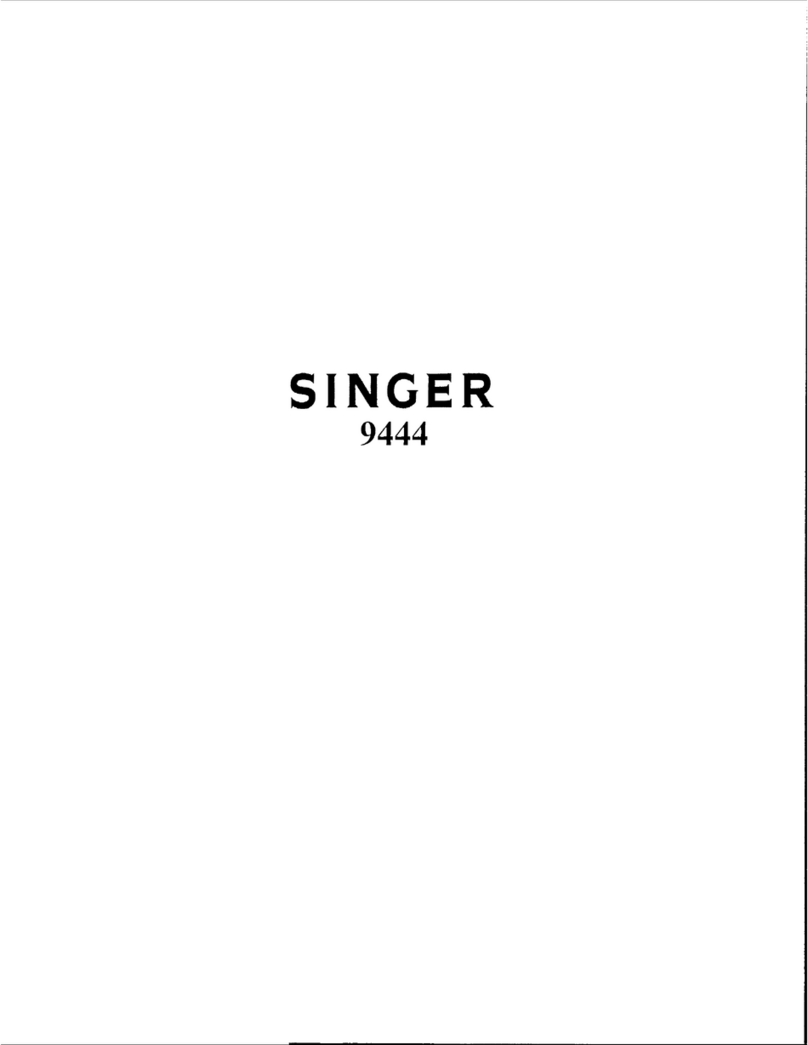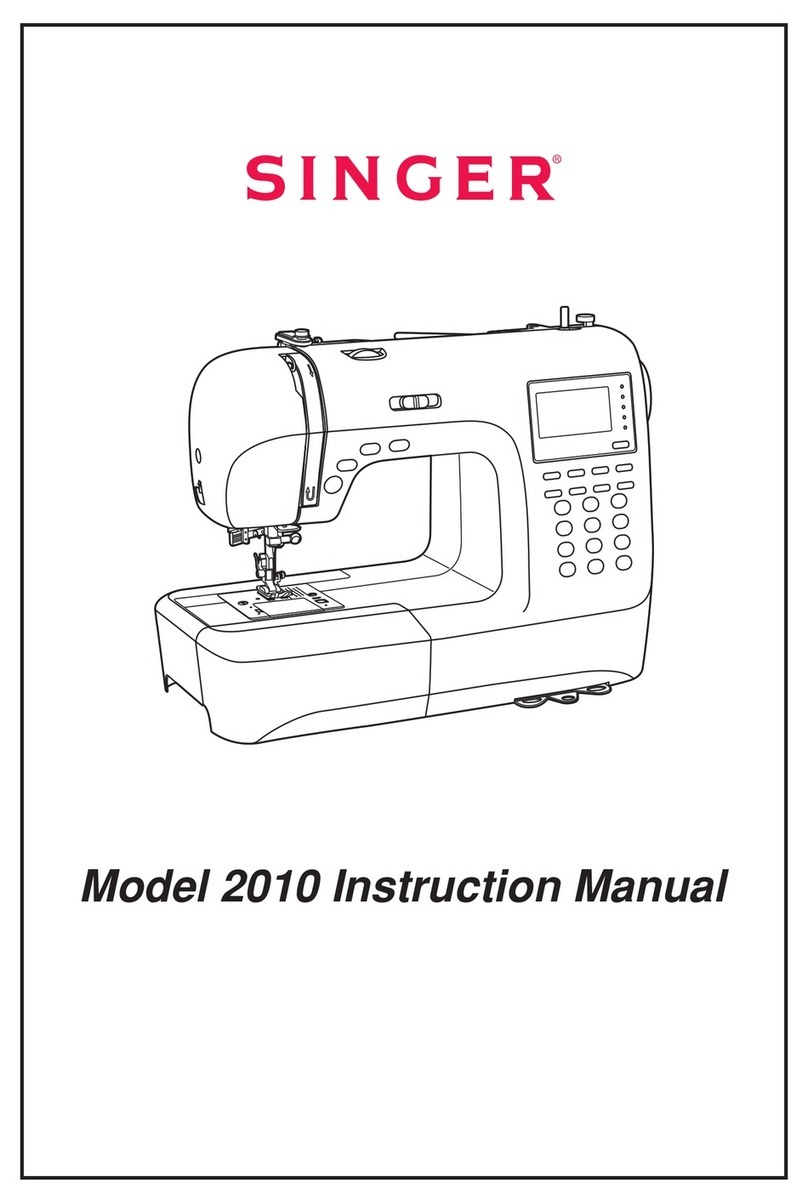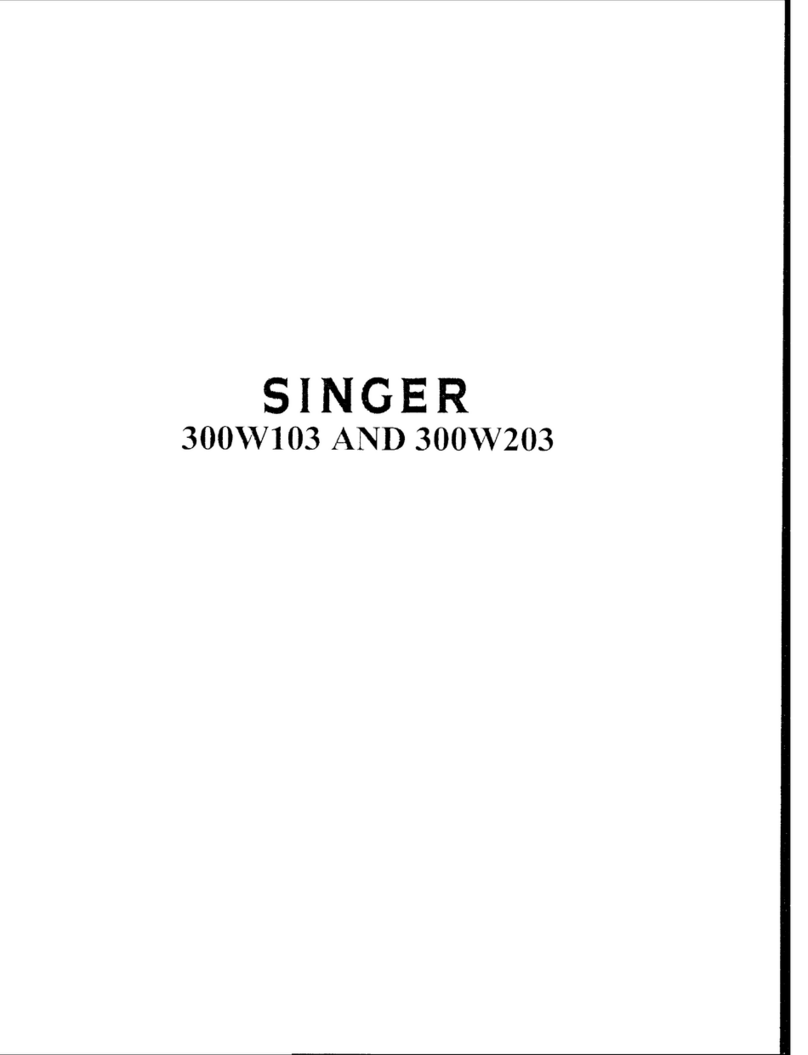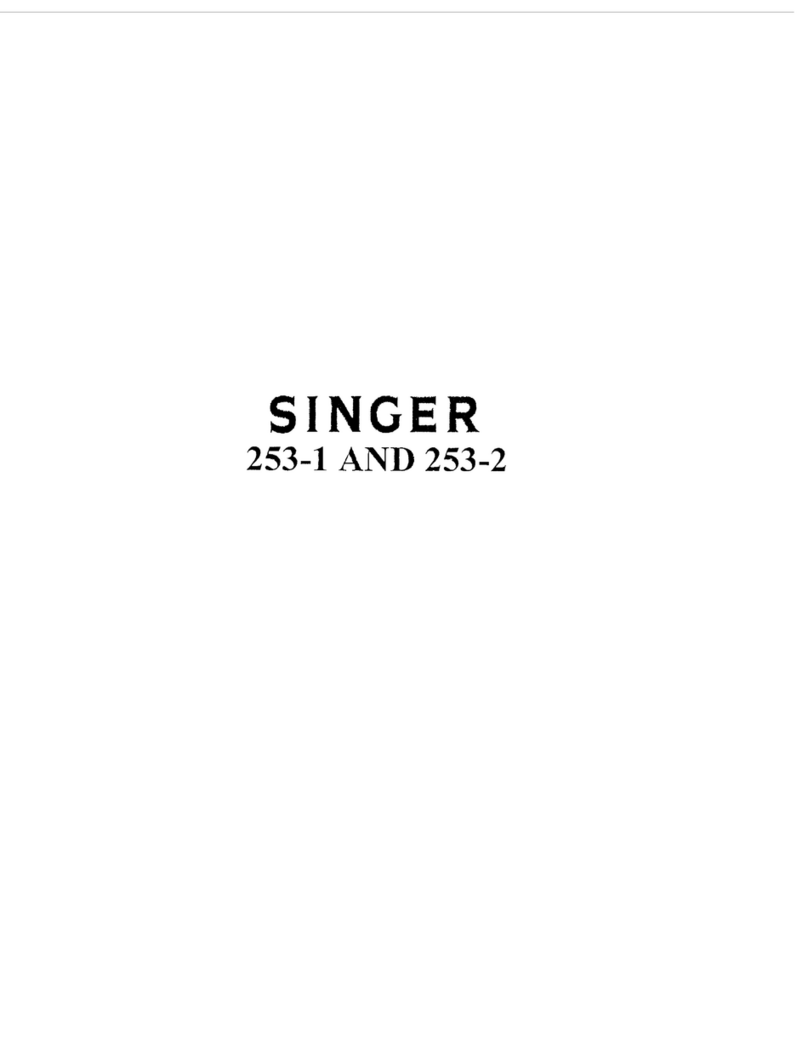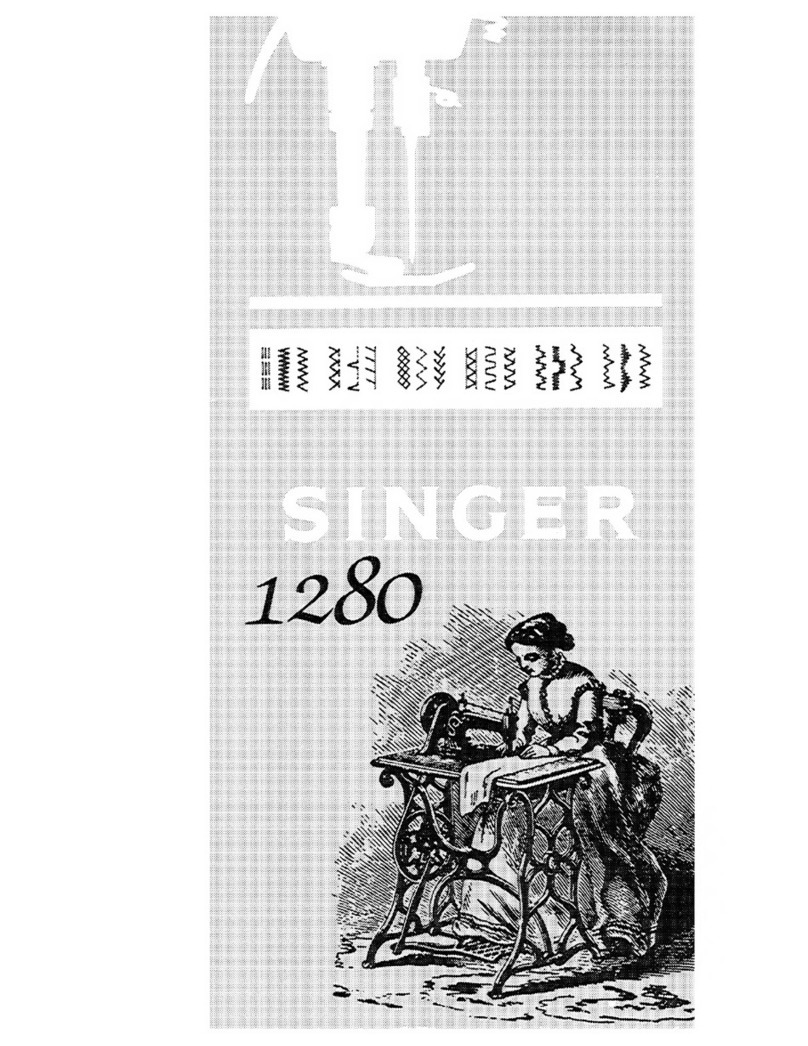5
1. VOTRE MACHINE À COUDRE
Description de la machine ---------------------------------------- 6 - 7
Accessoires ----------------------------------------------------------- 8 - 9
Préparation de la machine ------------------------------------- 10 - 11
Porte-bobine, Levier du pied presseur ----------------------12 - 13
Abaisse-griffes d’entraînement ------------------------------- 12 - 13
Utilisation du bras libre ----------------------------------------- 14 - 15
Préparation de la canette -------------------------------------- 16 - 17
Enlage du l de canette --------------------------------------- 18 - 19
Enlage du l supérieur ----------------------------------------20 - 23
Utilisation de l’enleur d’aiguille
Tableau des aiguilles, ls et tissus --------------------------- 24 - 25
Réglage de la tension du l supérieur ---------------------- 26 - 27
Remplacement du pied presseur ---------------------------- 26 - 27
Fonctions du panneau de commande ---------------------- 28 - 31
Touche couture arrière ------------------------------------------ 32 - 33
2. DÉMARRAGE DE LA COUTURE
Points utilitaires et continus ------------------------------- 34 - 39
Point droit ---------------------------------------------------------- 40 - 43
Pour garder la couture droite,
Insérer une fermetures à glissière ou un biais (galonner)
Exécution du point de matelassage ------------------------- 42 - 43
Point droit avec fonction de nouage automatique ------- 42 - 43
Point zigzag ------------------------------------------------------- 44 - 45
Réglage de la largeur et de la longueur de point,
Point bourdon, , Positionnement des motifs
Point ourlet invisible --------------------------------------------- 46 - 47
Zigzag multi-point, Point de lingerie, Point ajouré -------48 - 49
TABLE DES MATIÈRES
Points extensible ------------------------------------------------- 50 - 59
Point droit extensible, Point surjet extensible, Point plume,
Point ric rac, Point épingle, Point languette,
Point nid d’abeille, Point entredeux, Point d’échelle,
Point surjet double, Point entrecroisé, Point croisé,
Surjet oblique, Point épingle oblique, Point grec,
Point d’arête, Point d’épine, Point surjet renforcé,
Point sorcier, Point chevron
Pose de boutons ------------------------------------------------- 60 - 61
Confection des boutonnières --------------------------------- 62 - 67
Utilisation du pied boutonnière, procédure,
Boutonnières ganseés (renforceés), Couture de
boutonnières avec des tissus difciles à coudre
Boutonnière manuelle ------------------------------------------ 68 - 69
Points décoratifs et alphabetiques ----------------------- 70 - 79
Motifs décoratifs
3. ENTRETIEN DE VOTRE MACHINE
Nettoyage des griffes et du crochet ------------------------- 80 - 81
4. AUTRES RENSEIGNEMENTS
Pied pour point bourdon, Aiguille jumelée ----------------- 82 - 83
Réglage de la position d’aiguille pour le point droit ----- 84 - 85
5. VÉRIFICATION DES PETITS
PROBLÈMES DE COUTURE ------------------------ 86 - 87
6. TABLEAU DE RÉFÉRENCE RAPIDE DES
LONGUEURS ET LARGEURS DE POINTS --- 88 - 92
Version pour l’Europe
Dimensions: 449 mm × 229 mm × 318 mm
Poids de l’équipement: 7,6 kg
Tension nominale: 230 V ~
Fréquence nominale: 50 Hz
Entrée nominale: 65 W
Température ambiante nominale: 15 - 35°C
Niveau de bruit acoustique: moins de 70 db(A)


